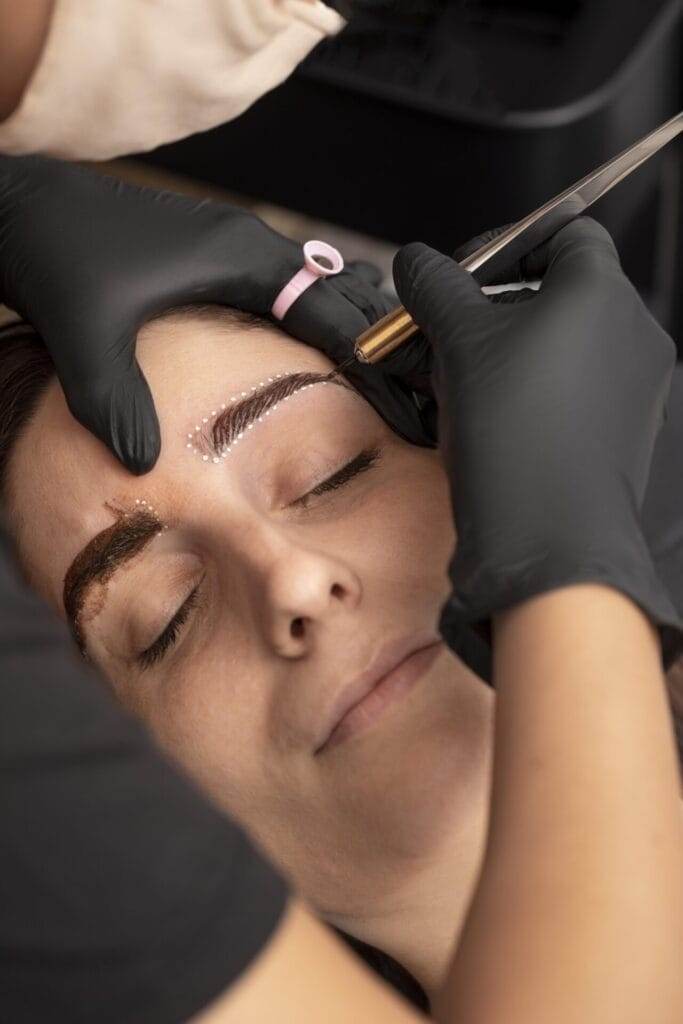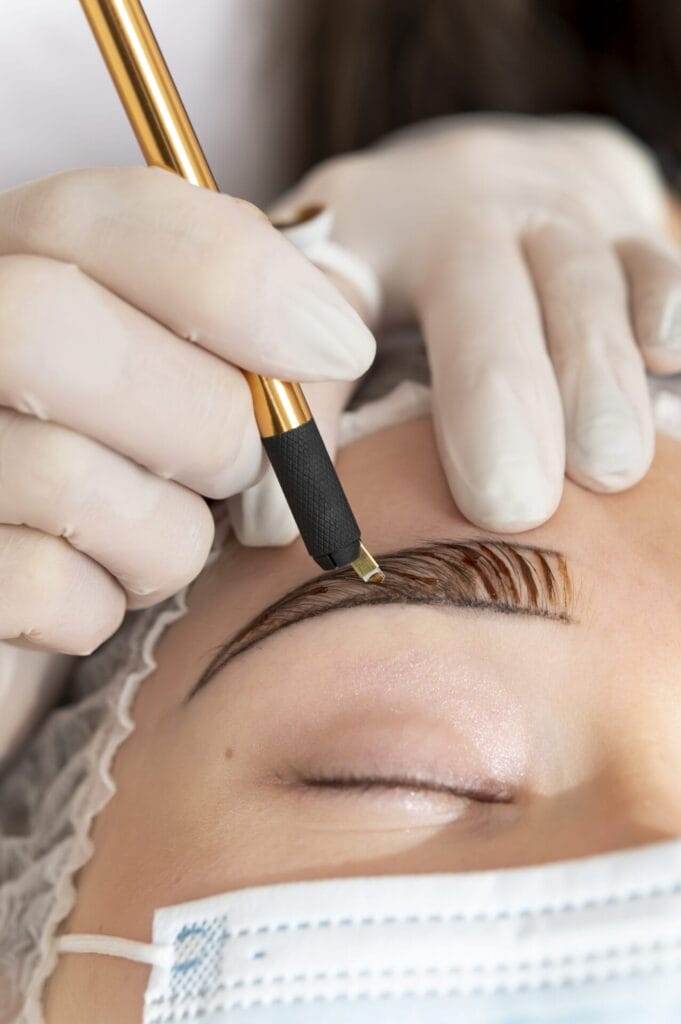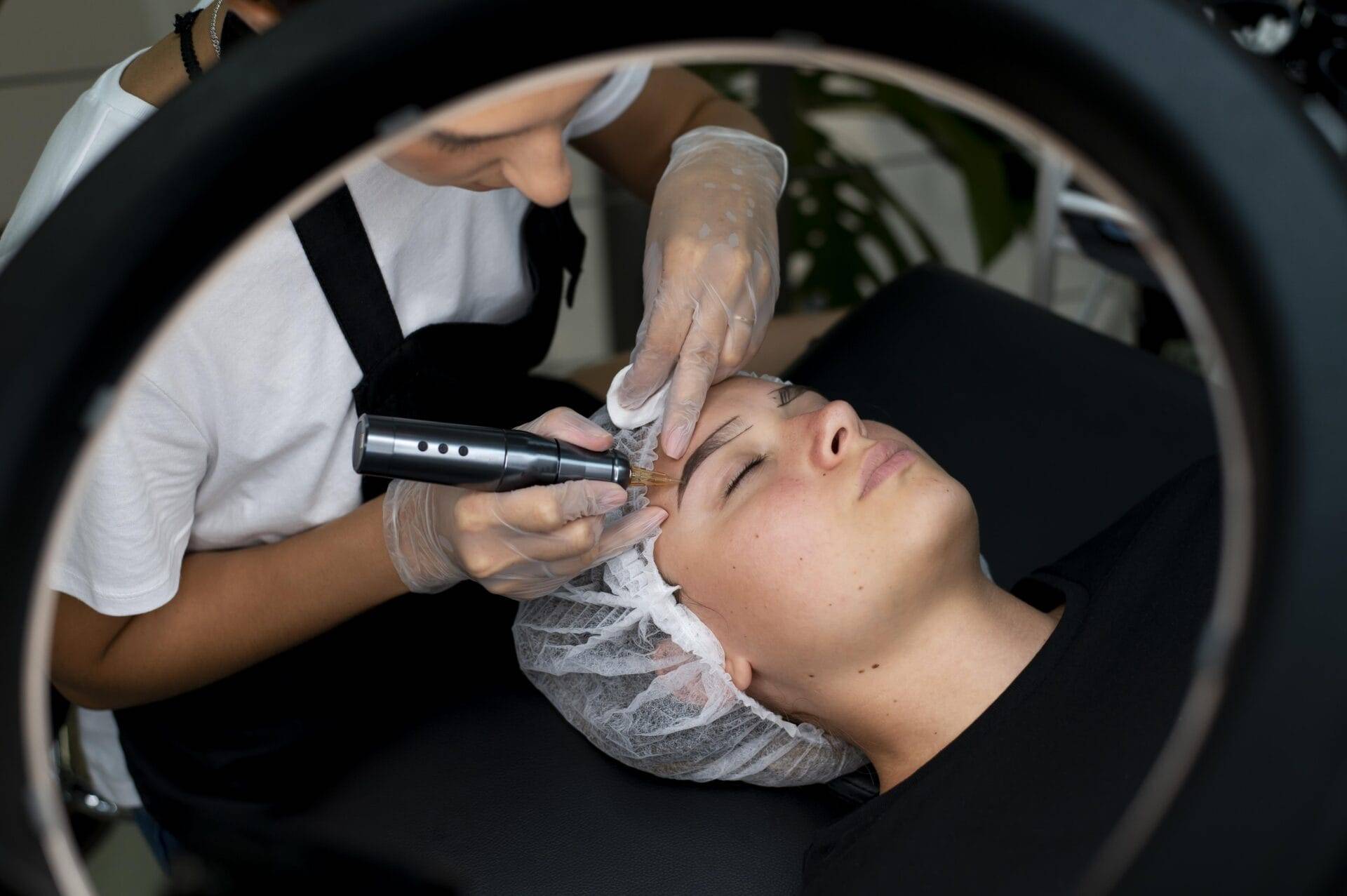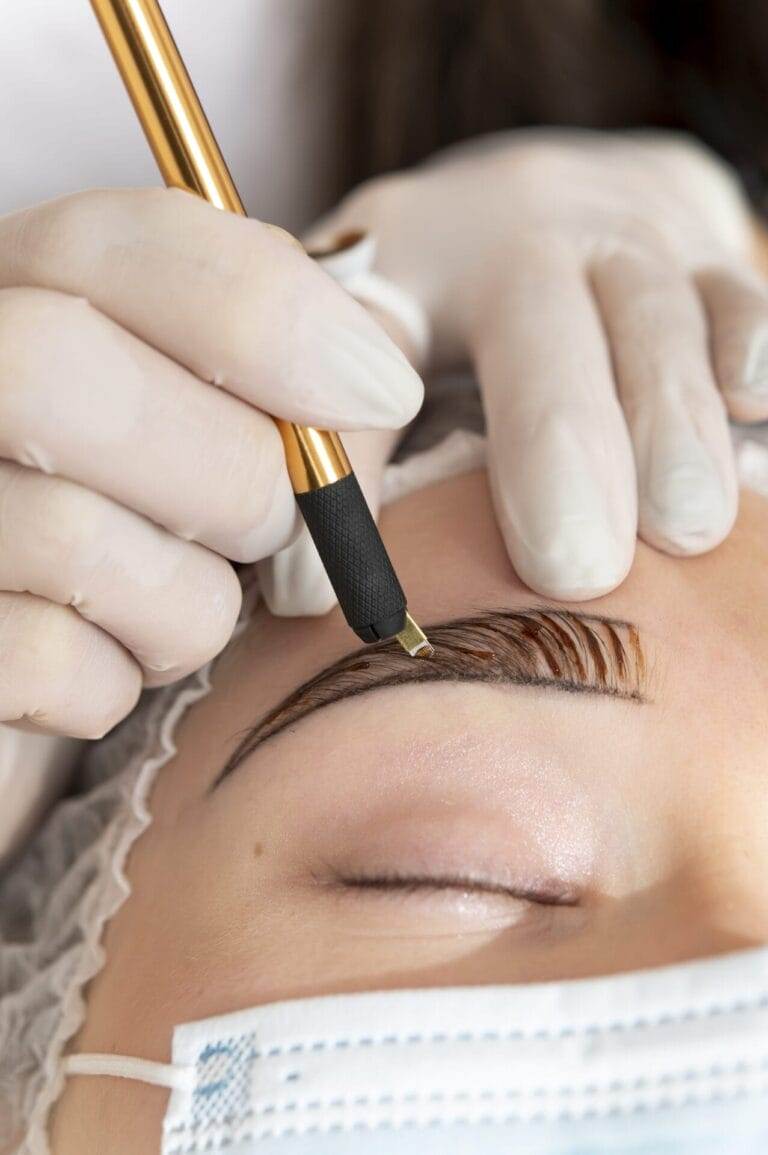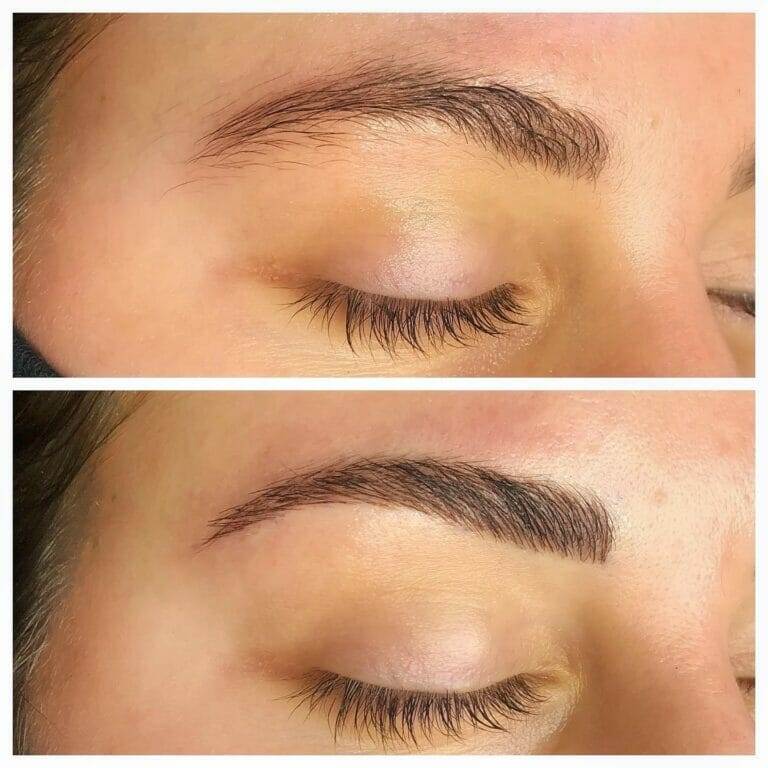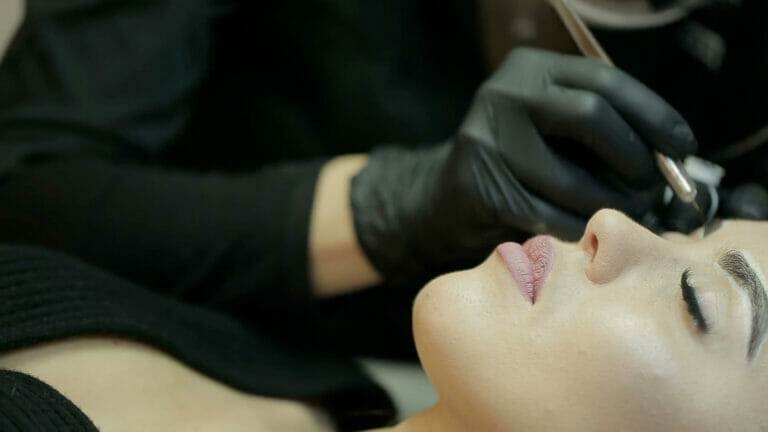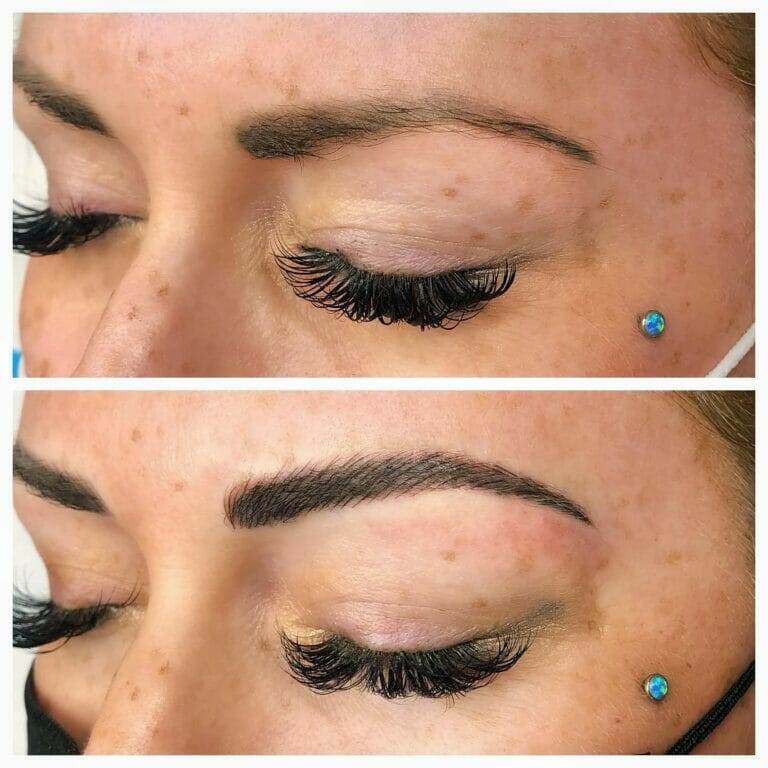Microblading is a semi-permanent cosmetic procedure that involves the use of a handheld tool to create hair-like strokes on the eyebrows. It is a form of tattooing, but differs from traditional tattooing in several ways. Unlike traditional tattooing, which uses a machine and deposits ink deep into the skin, microblading uses a manual tool with tiny needles to deposit pigment into the upper layers of the skin. This technique allows for more precise and natural-looking results.
The process of microblading begins with a consultation, where the client and artist discuss expectations and desired results. The artist will examine the client’s natural brow shape and color, and may perform a patch test to check for any allergies to the pigment. Once the client is ready, the artist will numb the area with a topical anesthetic to minimize any discomfort. The artist will then use a handheld tool to create hair-like strokes in the desired shape and color. The entire process typically takes about two hours, including numbing time.
The Benefits of Microblading: Why it’s Worth the Investment
Microblading offers several benefits that make it worth the investment. One of the main advantages is that it saves time and effort in your daily makeup routine. With microbladed brows, you no longer have to spend time filling in your brows with pencils or powders every morning. Your brows will already be perfectly shaped and filled in, saving you valuable time.
Another benefit of microblading is that it provides long-lasting results. Unlike traditional brow makeup, which can smudge or fade throughout the day, microbladed brows can last anywhere from one to three years, depending on your skin type and how well you take care of them. This means you can wake up every morning with perfect brows without having to worry about touching them up throughout the day.
One of the most appealing aspects of microblading is that it creates natural-looking brows. The hair-like strokes created during the procedure mimic the appearance of real brow hairs, resulting in a more realistic and natural look. This is especially beneficial for those with sparse or thinning brows, as microblading can fill in gaps and create the illusion of fuller brows.
In addition to saving time and effort, and providing long-lasting and natural-looking results, microblading also boosts confidence. Many people feel self-conscious about their brows, whether they are too thin, too light, or have uneven shape. Microblading can help correct these issues and give you the brows you’ve always dreamed of, boosting your confidence and self-esteem.
The Consultation Process: What to Expect and How to Prepare
The consultation process is an important step in the microblading journey. It allows you to discuss your expectations and desired results with the artist, and for the artist to assess your natural brow shape and color. Here’s what to expect during a microblading consultation:
1. Discussing expectations and desired results: The artist will ask you about your brow goals and what you hope to achieve with microblading. They will also explain the limitations of the procedure and what can realistically be achieved based on your natural brows.
2. Examining the natural brow shape and color: The artist will closely examine your natural brow shape and color to determine the best approach for your microblading procedure. They will take into consideration factors such as your face shape, bone structure, and hair color.
3. Patch test for allergies: Before proceeding with the procedure, the artist may perform a patch test to check for any allergies to the pigment used in microblading. This involves applying a small amount of pigment to a small area of your skin and monitoring for any adverse reactions.
4. Preparing for the procedure: The artist will provide you with pre-procedure instructions to ensure that you are properly prepared for your microblading appointment. This may include avoiding certain medications or skincare products, as well as refraining from plucking or waxing your brows in the weeks leading up to the procedure.
The Microblading Procedure: Step-by-Step Guide to Achieving Perfect Brows
The microblading procedure consists of several steps that are carefully executed to achieve perfect brows. Here is a step-by-step guide to the microblading process:
1. Numbing the area: Before starting the procedure, the artist will apply a topical anesthetic to numb the area and minimize any discomfort. This will ensure that you are as comfortable as possible throughout the procedure.
2. Mapping out the brow shape: Using a brow pencil or marker, the artist will map out the desired shape of your brows. This involves measuring and marking specific points on your face to create symmetrical and well-proportioned brows.
3. Microblading strokes: Once the brow shape is mapped out, the artist will use a handheld tool with tiny needles to create hair-like strokes in the skin. The strokes are made in the direction of natural hair growth to create a realistic and natural look.
4. Applying pigment: After creating the strokes, the artist will apply pigment to the area using a microblading pen or brush. The pigment is carefully chosen to match your natural brow color and desired results.
5. Checking for symmetry: Throughout the procedure, the artist will regularly check for symmetry and make any necessary adjustments to ensure that both brows are even and well-balanced. This attention to detail is crucial in achieving perfect results.
Aftercare Tips: How to Ensure Your Microbladed Brows Heal Properly
Proper aftercare is essential for ensuring that your microbladed brows heal properly and last as long as possible. Here are some aftercare tips to follow:
1. Avoiding water and sweat for a few days: In the first few days after your microblading procedure, it’s important to avoid getting your brows wet or sweating excessively. This can cause the pigment to fade or blur, resulting in less defined brows.
2. Applying ointment: Your artist will provide you with an ointment or balm to apply to your brows during the healing process. This will help keep the area moisturized and promote proper healing. Follow the artist’s instructions on how often to apply the ointment.
3. Not picking at scabs: As your brows heal, they may develop scabs or flakes. It’s important not to pick at these scabs, as this can cause the pigment to come off prematurely and result in patchy brows. Let the scabs naturally fall off on their own.
4. Touch-up appointment: Most microblading procedures require a touch-up appointment about 4-6 weeks after the initial procedure. This allows the artist to make any necessary adjustments and ensure that your brows heal evenly and last as long as possible. Be sure to schedule and attend your touch-up appointment.
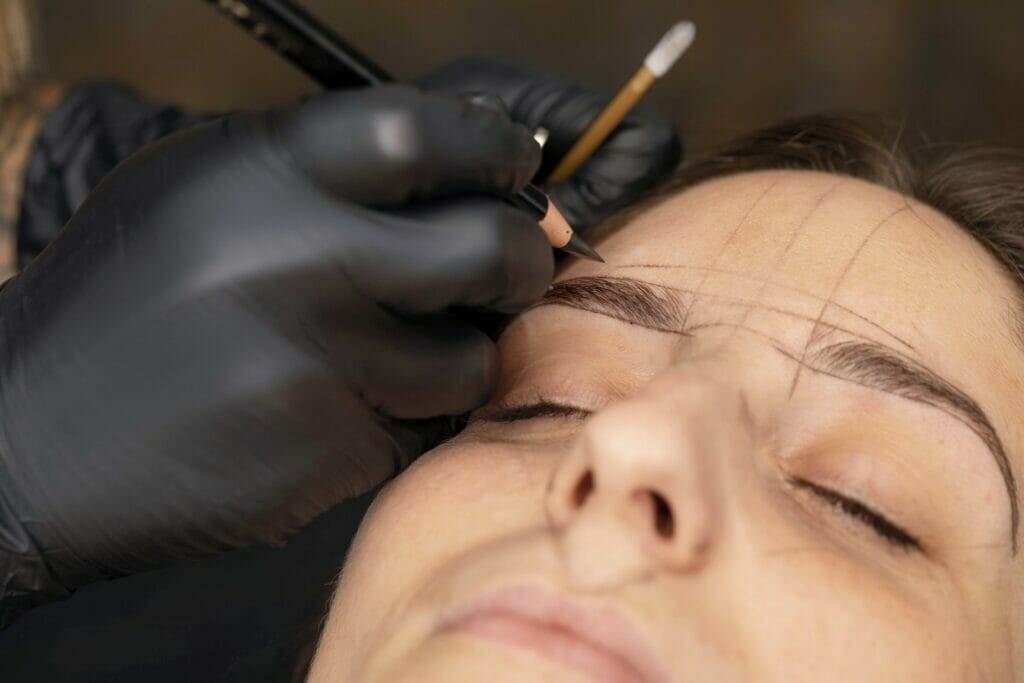
Common Misconceptions About Microblading: Debunking Myths and Setting the Record Straight
There are several common misconceptions about microblading that can deter people from considering the procedure. Here are some of these myths debunked:
1. Painful procedure: While microblading does involve some discomfort, it is generally not considered to be a painful procedure. Most artists use a topical anesthetic to numb the area and minimize any discomfort. Some clients may experience slight discomfort or a scratching sensation during the procedure, but it is typically well-tolerated.
2. Permanent results: Microblading is a semi-permanent procedure, meaning that the results will gradually fade over time. The pigment used in microblading is designed to break down and fade naturally in the skin, which is why touch-up appointments are necessary to maintain the desired results.
3. Only for women: Microblading is often associated with women, but it is not limited to any gender. Men can also benefit from microblading, especially if they have sparse or thinning brows that they would like to enhance.
4. Not suitable for all skin types: While microblading is suitable for most skin types, there are some exceptions. People with certain skin conditions, such as eczema or psoriasis, may not be good candidates for microblading. It’s important to consult with a skilled professional to determine if microblading is right for you.
Microblading vs. Other Brow Enhancement Techniques: How it Compares
Microblading is just one of many brow enhancement techniques available today. Here’s how it compares to other popular methods:
1. Traditional tattooing: Traditional tattooing uses a machine to deposit ink deep into the skin, resulting in permanent results. While traditional tattooing can be used to create brows, the results are often less natural-looking and can fade or change color over time. Microblading, on the other hand, uses a manual tool and deposits pigment into the upper layers of the skin, resulting in more precise and natural-looking results that gradually fade over time.
2. Brow pencils and powders: Brow pencils and powders are a popular choice for filling in sparse or thinning brows. While these products can create a temporary solution, they require daily application and can smudge or fade throughout the day. Microblading provides a longer-lasting solution that eliminates the need for daily makeup application.
3. Brow tinting: Brow tinting involves dyeing the brow hairs to create a fuller and more defined look. While brow tinting can enhance the appearance of the brows, it does not address issues such as sparse or uneven brows. Microblading, on the other hand, can fill in gaps and create the illusion of fuller brows.
4. Microshading: Microshading is a technique that combines microblading with shading to create a more filled-in and defined look. It involves creating hair-like strokes with a microblading tool and then shading in between the strokes with a different tool or technique. Microshading is a good option for those who want a more dramatic or filled-in look, while microblading alone creates a more natural look.
The Role of Precision and Care in Microblading: Why Attention to Detail is Key
Precision and attention to detail are crucial in achieving the best results with microblading. Here’s why:
1. Importance of a skilled artist: Microblading is an art form that requires skill and precision. A skilled artist will have a keen eye for detail and be able to create hair-like strokes that mimic the appearance of real brow hairs. They will also be able to assess your natural brow shape and color to determine the best approach for your microblading procedure.
2. Measuring and mapping the brows: Before starting the microblading procedure, the artist will measure and map out the desired shape of your brows. This involves using specific measurements and marking points on your face to create symmetrical and well-proportioned brows. This attention to detail ensures that both brows are even and balanced.
3. Choosing the right pigment color: The artist will carefully choose a pigment color that matches your natural brow color and desired results. This requires an understanding of color theory and how different pigments will appear on different skin tones. Choosing the right pigment color is essential in creating natural-looking results.
4. Creating natural-looking strokes: The artist will use a handheld tool with tiny needles to create hair-like strokes in the skin. These strokes are made in the direction of natural hair growth to create a realistic and natural look. The artist’s precision and attention to detail in creating these strokes is what sets microblading apart from other brow enhancement techniques.
How Microblading Enhances Your Natural Beauty: Real-Life Transformations and Testimonials
Microblading has the power to enhance your natural beauty and transform your brows. Here are some real-life transformations and testimonials from clients who have undergone microblading:
1. Before and after photos: Before and after photos are a powerful way to see the transformative effects of microblading. These photos show the difference in brow shape, fullness, and definition before and after the procedure. Many clients are amazed at how microblading can completely transform their brows and enhance their overall appearance.
2. Client testimonials: Client testimonials provide insight into the personal experiences and satisfaction of those who have undergone microblading. Many clients report feeling more confident and beautiful with their new brows. They often mention how microblading has simplified their daily makeup routine and saved them time and effort.
3. Boosting confidence and self-esteem: One of the most common themes in client testimonials is the boost in confidence and self-esteem that comes with microbladed brows. Many clients report feeling more put-together and polished with their new brows, and no longer feel self-conscious about their natural brows.
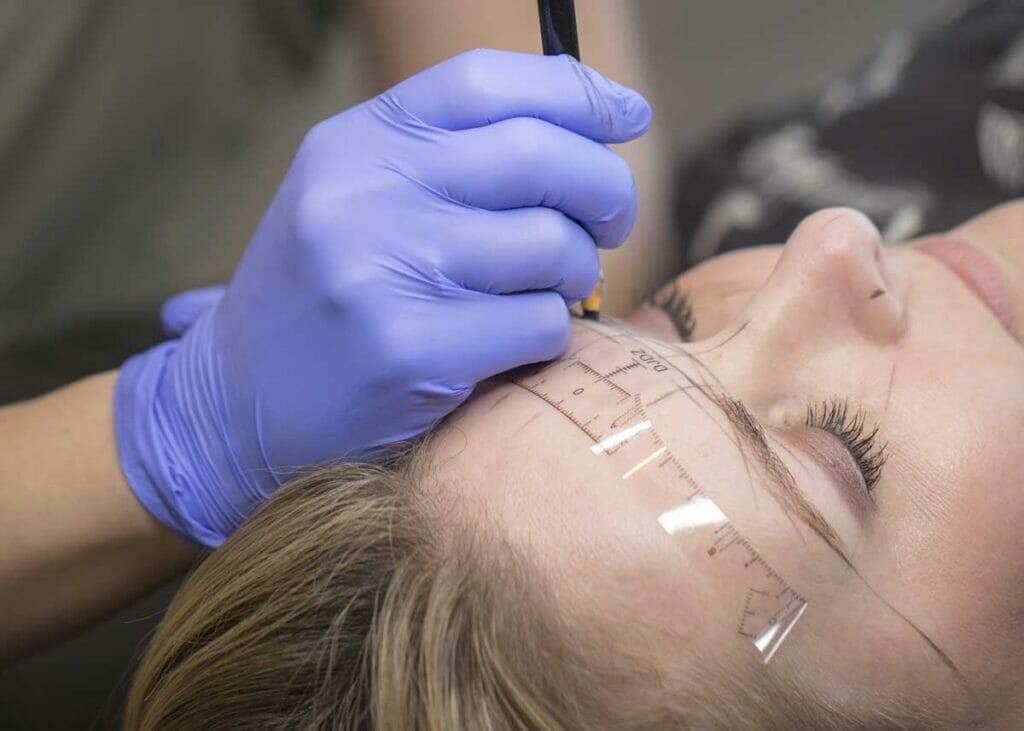
Why Microblading is a Game-Changer for Your Beauty Routine
Microblading is a game-changer for your beauty routine for several reasons. It saves time and effort in your daily makeup routine, provides long-lasting results, creates natural-looking brows, and boosts confidence and self-esteem. By finding a skilled professional, going through the consultation process, following proper aftercare, and debunking common misconceptions, you can achieve perfect brows that enhance your natural beauty. Microblading is a worthwhile investment that can transform your brows and simplify your beauty routine.

